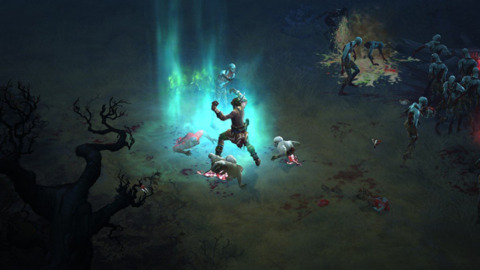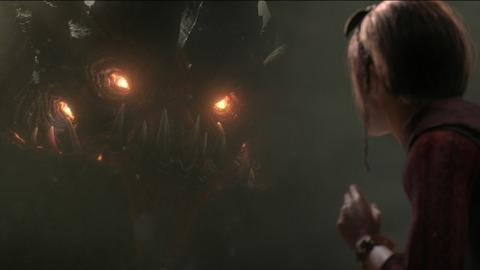Has the Diablo Franchise Stalled?
On the eve of the launch of Diablo III, we find out how Blizzard plans to make the game feel like a new experience.
Twelve years ago, Diablo II became the fastest-selling video game of all time, selling 1 million units in its first two weeks on the market. Praised for its depth and intuitiveness, the game was an improvement on Diablo in almost every way: bigger, bolder, and more accessible. Now, on the eve of the release of the long-awaited, highly anticipated third entry in the best-selling series, the time has come to ask: will Diablo III manage to pull off the same feat?
In June 2003, three years after the release of Diablo II, Blizzard North designer Max Schaefer walked away from the project he'd spent the last 10 years of his professional life perfecting. While some in Schaefer's position would have gone on to try their hand at something new, the next time Schaefer's name appeared in the credits of a game was in 2009 with the release of Torchlight, a game that has been compared to Diablo in almost every single way.
"You don't need to wait for Diablo III," GameSpot wrote of Torchlight in 2009. "Fans of action-oriented role-playing can get a first-rate fix of hacking and slashing right now in Torchlight, a great dungeon crawl from the designers of the first two Diablo games and the cult hit Fate. Runic Games has forged a letter-perfect copy of the action role-playing formula with fast-paced combat and cartoonish graphics that will keep you clicking until the wee hours."
"The games are different: the pacing is different, the combat feels different. We are making the game we want to make, and if it comes out near Diablo III, so be it."
But Torchlight is more than just a variation on a theme. Created by Schaefer and several ex-Blizzard North employees following the formation of co-founded studio Runic Games, Torchlight's mere existence--and Schaefer's determination to pursue it--has opened the doors to a genre long believed to be the exclusive domain of the hardcore gamer. While Schaefer can't avoid the comparisons between Torchlight and Diablo, he has no reservations about going head-to-head with the franchise he helped create. The failure of Flagship Studios, Schaefer's first venture after leaving Blizzard North and the Diablo franchise, pushed him and his colleagues to do something they knew would succeed. His return to role-playing games, the genre he has worked in for some 16 years, did more than just ensure Torchlight's success: it signaled the arrival of a new voice.
"The games are actually quite different," Schaefer says of the Diablo/Torchlight comparisons. "The pacing is different, the combat feels different, and they are actually more individual than first glance might imply. Plus, we are sort of focusing on areas they aren’t, like LAN and offline single-player play, and a much lower price point. I think we have maybe a healthy competition with Blizzard, but there is nothing but respect there. We are making the game we want to make, and if it comes out near Diablo III, so be it. There's room for more than one."
Since announcing Diablo III in 2008, Blizzard has hammered home the game's features: a deeper combat model, a broader story, new customization options, and two types of in-game auction houses. But it was the revelation that Diablo III would require a constant Internet connection to play, even in single-player mode, which caused uneasiness among some of the franchise's most dedicated fans. On this point, Blizzard remains fixed.
"We've never seen Diablo as a single-player game," Diablo III game director Jay Wilson says. "It's always been developed from the ground up as a co-op game. People can join the game dynamically. We see it as an online game, and we think that's the best experience we can give to players. We realise that there's sacrifices that we have to take on to be able to focus on that experience."
Wilson was brought on board following the departure of Schaefer and other key members of the Diablo team from Blizzard North in 2003. The studio was eventually shut down by Blizzard in 2005, and all Diablo III development was moved in-house at Blizzard's headquarters in Irvine, California. Wilson, a former Relic designer whose work credits include Warhammer 40,000: Dawn of War and Company of Heroes, says the decision to exclude an offline mode came from looking back at the Diablo franchise and isolating both the good and bad points of the series. For example, while Diablo II gave players the option of an offline mode, Wilson says a lot of players reached a point where they wanted to take their game online but found their level 30 or 40 character was invalid. The director also believes a lot of gameplay elements misfired in Diablo II, like the fact that players could just hit the potion button and still overcome any incoming damage.
"A lot of Diablo II came down to these one-shot bad situations coupled with one-skill-centric spamming combat model. It's amazing the game had the longevity it did with such a simple combat model. Most players resented that, and that was what we wanted to avoid with Diablo III."
It is these smaller tweaks and improvements that represent the innovation behind Diablo III, Wilson says. More often than not, people look for a big, flashy new feature as a sign that a game has significantly improved on its predecessor. Diablo III doesn't have this feature. What it does have, according to Wilson, is good execution. Besides, this isn't the first time gamers have accused a Blizzard game of not innovating enough. (Just look at some of the mixed reactions the Diablo III beta received.)
"I don't know of a Blizzard game that did not get that criticism. People have said that about almost every one of our games. People are looking for something, or even just one thing, that says to them that this is the next greatest thing ever. But we don't think that's the way to make games. Innovation comes from perfect execution. An innovative game that's poorly executed is not a good game. A game that's executed well is always a great game."

Looking back at Diablo II's development, Schaefer can't say with certainty what the game could have done better: having put everything into its development, Schaefer and his team came away from the project utterly spent, and nothing, not even a long period of introspective detachment, seems to have changed that. But he does know why the original Diablo had such an impact, and why it was so easy to make Diablo II an even bigger and better experience.
"I think what Diablo did right was to make dungeon crawling fun again," he says. "It marked a vindication of our wacky theories about what RPGs should be like. I think we rescued RPGs for people who just want to hit monsters with cool swords, and dispensed with all that advanced math."
"We had no idea Diablo would be so big, so going into Diablo II we had a lot more confidence," Schaefer says. "Mostly we wanted to make everything bigger and better than before, and learn from the mistakes of Diablo. We were passionate about making a coherent and interesting-looking world."
"I don't know of a Blizzard game that did not get [accused of not innovating].
People are looking for something, or even just one thing, that says to them that this is the next greatest thing ever."
The same success has followed Schaefer at Runic. In July 2011, Torchlight sales surpassed 1 million copies across all platforms, allowing Schaefer and his team to begin working on a sequel. With new character classes, quests, monsters, and dungeons, and a much-requested co-op mode, Torchlight II was originally slated for release in 2011. Runic pushed this date back to sometime in 2012, revealing it would hold off releasing the game until after the release of Diablo III. The decision had as much to do with strategy as it did with respect for Blizzard.
"To me, Diablo III looks fantastic," Schaefer says. "I will be a first-day buyer. I have confidence that the franchise will have a future beyond Diablo III. Provided it’s as good as it looks to be, it will be a very popular game. Nobody will be talking about 'stale' anymore."
Both Schaefer and Wilson arrive at this point. Stale or innovative, complex or simplistic, online or off: regardless of their shortcomings, both Diablo III and Torchlight II serve to improve, diversify, and evolve their genre.
"I don't feel the market needs to be reduced to just one or the other," Wilson says. "I know some people want to put their stake in the ground and say "Diablo III is better" or "Torchlight II is better." Personally, I will play both. I think most players who love this genre will play both."
"The action RPG has been vastly underpopulated for years, so to finally see a good number of titles coming out that are high quality…well, I say hallelujah."
Got a news tip or want to contact us directly? Email news@gamespot.com

Join the conversation